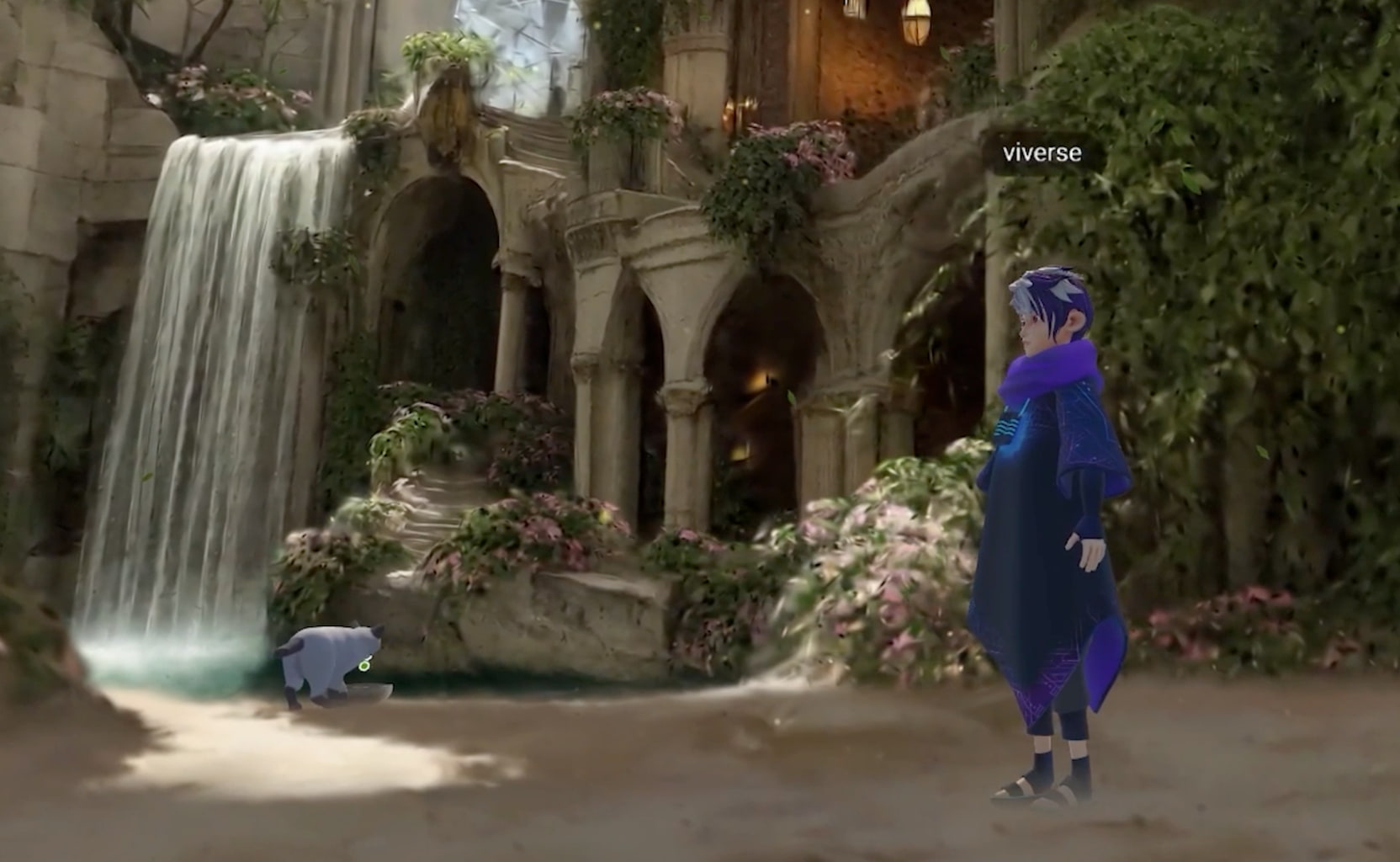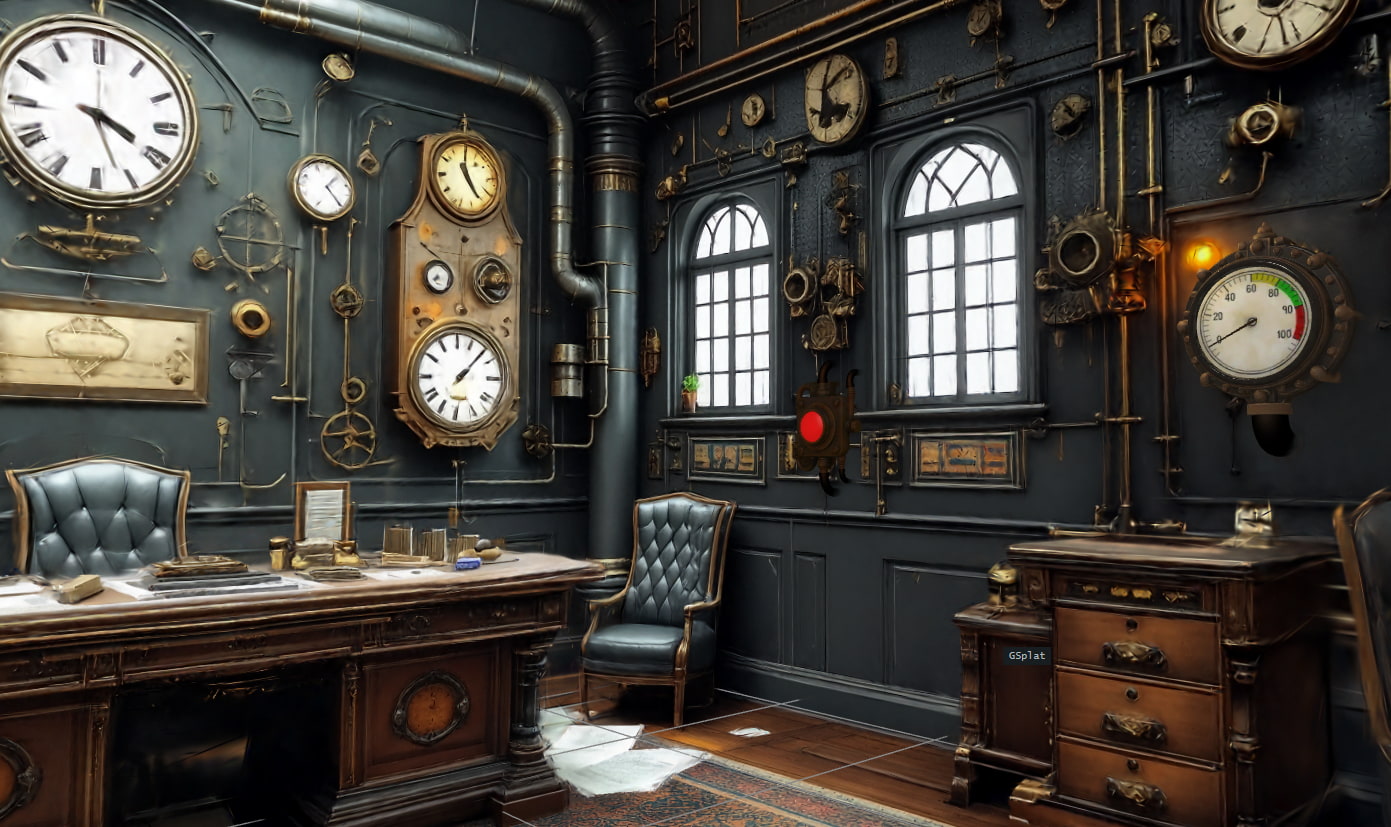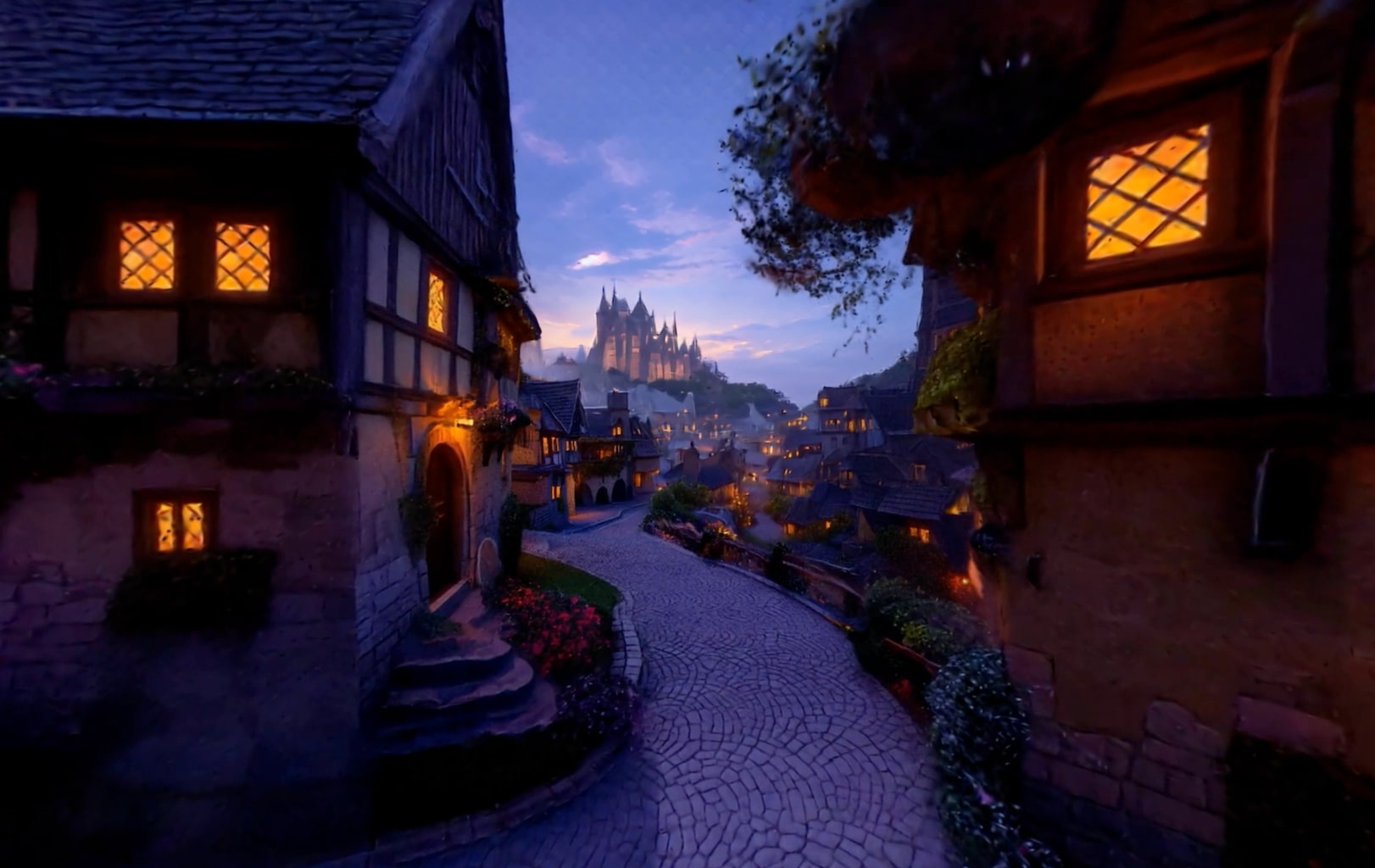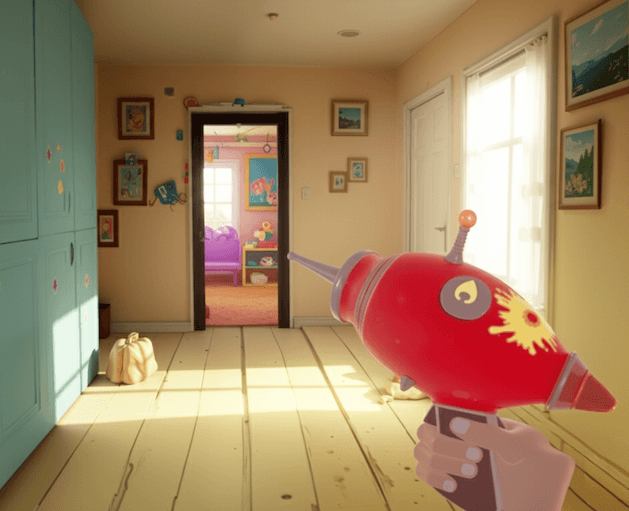Sep 16, 2025From AI generation to playable experiences — how VIVERSE and World Labs combined Marble’s spatial intelligence with creator-led worldbuilding to reimagine virtual design.
Building Worlds Together: How VIVERSE and Marble Empowered Creators to Build Interactive 3D Worlds
Overview
VIVERSE collaborated with World Labs, creators of Marble, to explore how AI-generated 3D worlds could evolve into fully interactive experiences. The project tested how creators could blend generative scene creation with hands-on worldbuilding, creating a faster and more intuitive path from concept to playable space.
Marble’s AI generation platform produces detailed, explorable 3D environments from a single image or text prompt. Within VIVERSE’s ecosystem, these scenes were refined, connected, and made interactive — all running seamlessly in the browser.
The collaboration reflected a shared belief that AI should enhance creative workflows rather than replace human vision, empowering creators to bring their ideas to life more efficiently while retaining full artistic control.
Collaboration Overview
The collaboration brought together two complementary innovations in 3D creation.
Marble provided the generative foundation, producing explorable 3D Gaussian Splat (3DGS) scenes directly from text or image inputs. These lightweight, visually detailed environments served as the creative base for VIVERSE’s real-time experiments.
VIVERSE extended these generated worlds into interactive, playable experiences — adding game logic, environmental effects, and visual refinement optimized for the web.
Both teams share a creator-first philosophy: AI should enhance, not replace, human creativity. The goal was to demonstrate how generative tools can accelerate early-stage worldbuilding while keeping storytelling, tone, and artistic direction in human hands.
The collaboration served as both a creative and technical showcase, illustrating how AI-assisted generation and interactive design can coexist in an open, browser-based ecosystem accessible to any creator.
The Games
Whiskerport — Expanding Pre-Generated Worlds
Play it here
Whiskerport began as an existing Marble demo scene. The VIVERSE team used it as a foundation to explore how static generations could evolve into fully explorable spaces.
Using PlayCanvas, creators imported the 3DGS files, added portal transitions, collision boundaries, and object placements, and connected multiple scenes to form a continuous, explorable journey.
Creator Focus: Extend an existing AI-generated world into a multi-scene environment.
Outcome: Showed how creators can build on Marble worlds without needing to model or light assets from scratch.

Whiskerhill — Adding Interactivity to Existing Worlds
Play it here
Whiskerhill, another Marble demo world, served as the testing ground for gameplay elements and interactive storytelling.
The VIVERSE team layered in collectible triggers, light quest logic, and environmental cues, turning the once-static environment into a responsive space.
Creator Focus: Introduce story-driven interactions within a pre-existing AI-generated scene.
Outcome: Demonstrated that AI worlds can quickly become narrative prototypes with minimal technical setup.
Clockwork Conspiracy — From Prompt to Playable Game
Play it here
Clockwork Conspiracy was the only world generated specifically for this collaboration. The team began with a simple text prompt — “medium steampunk room with clocks on the walls and pipes throughout.”
Using Marble’s generation capabilities, the base scene was imported into PlayCanvas, refined with lighting adjustments, collider setups, and puzzle scripting, and then published as a playable experience through VIVERSE Studio.
Creator Focus: Transform a fresh AI generation into a full gameplay experience.
Outcome: Validated an efficient, creator-driven workflow from idea to interactive world.

Creative and Technical Process
The collaboration explored how creators could use Marble as the generative foundation and VIVERSE as the interactive layer. Each project tested a different stage in that workflow.
- Whiskerport: Expansion — linking multiple generated scenes into a continuous world using portal scripting and asset streaming optimized for web and mobile.
- Whiskerhill: Interactivity — adding triggers, simple logic systems, and environmental storytelling.
- Clockwork Conspiracy: End-to-end creation — showing how a simple AI prompt can evolve into a polished, playable experience.
Across all projects, the core workflow followed five steps:
- Generation: Create or select a base 3DGS scene in Marble.
- Import: Bring the scene into PlayCanvas for editing and scripting.
- Refinement: Add colliders, triggers, lighting, and objects.
- Optimization: Tune performance for mobile and browser environments.
- Publishing: Deploy to VIVERSE Studio for exploration and sharing.
Results and Impact
Creative Results
- Enabled creators to move from concept to interactive prototypes in a fraction of the usual time.
- Encouraged experimentation with layout, atmosphere, and storytelling without extensive 3D modeling.
- Reinforced AI’s role as a creative accelerator rather than a replacement for design.
Technical Results
- Verified full compatibility between Marble’s 3DGS outputs and VIVERSE’s publishing tools.
- Proved optimized Marble scenes could run smoothly in-browser and on mobile devices.
- Introduced new methods for scene linking and streaming optimization.
Community Results
- Lowered the entry barrier for 3D creation, showing that small teams and solo creators can build immersive worlds quickly.
- Sparked internal initiatives within VIVERSE to connect AI generation with no-code publishing workflows.
The workflow between World Labs and VIVERSE has completely changed how I approach 3D world-building. I can create a space from an image, generate a Gaussian splat, and have an interactive, physics-enabled prototype with avatars running in VIVERSE in under an hour.
Matt Cool, Web Dev and Creative Technologist

Looking Ahead
Following the success of these early projects, both teams are continuing to explore how AI can make worldbuilding and game creation more accessible to everyone. The goal is not to replace human creativity, but to give creators faster, more intuitive tools for turning their ideas into playable, explorable worlds.
Future efforts will focus on expanding how Marble’s spatial generation can support a broader range of creators — from independent artists and educators to designers experimenting with interactive storytelling, simulation, and training environments.
Alongside this, new educational resources are being developed to share best practices in AI-assisted worldbuilding and design, helping creators understand how to blend generative tools with their own artistic process.
Together, Marble and VIVERSE are demonstrating a more inclusive vision for 3D creation — one where anyone with an idea can build, explore, and share new worlds with ease.
Read More
Sep 16, 2025
Gaussian Mansion: Creating Playable Worlds with Marble
Integrating spatial generation, AI-driven modeling, and Unreal Engine to streamline 3D world production from concept art to gameplay.

Sep 16, 2025
Splat World: Exploring New Dimensions of Gaussian Splatting in VR
How one developer turned Gaussian splats into a new language for building interactive worlds.
